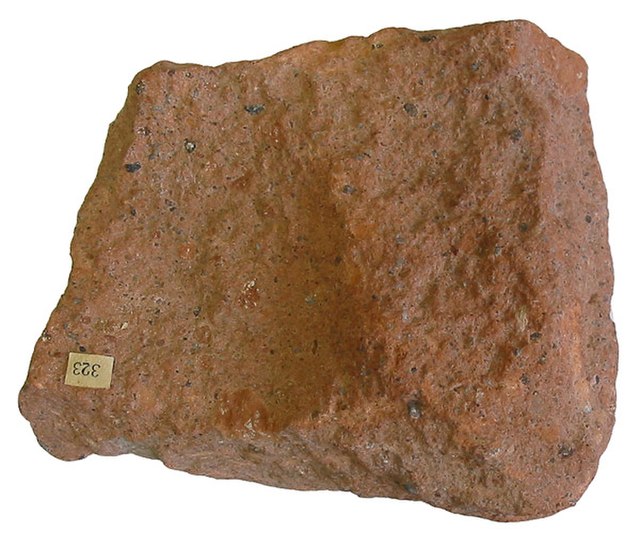Pumice, called pumicite in its powdered or dust form, is a volcanic rock that consists of highly vesicular rough-textured volcanic glass, which may or may not contain crystals. It is typically light-colored. Scoria is another vesicular volcanic rock that differs from pumice in having larger vesicles, thicker vesicle walls, and being dark colored and denser.
Specimen of highly porous pumice from Teide volcano on Tenerife, Canary Islands. Density of specimen approximately 0.25 g/cm3; scale in centimeters.
Kutkhiny Baty, a pumice rock formation outcrop located 4 km from the source of the Ozernaya River (Lake Kurile), near the southern tip of the Kamchatka Peninsula, Russia.
Illustrates the porous nature in detail.
Rocks from the Bishop tuff, uncompressed with pumice on left; compressed with fiamme on right.
Volcanic rocks are rocks formed from lava erupted from a volcano. Like all rock types, the concept of volcanic rock is artificial, and in nature volcanic rocks grade into hypabyssal and metamorphic rocks and constitute an important element of some sediments and sedimentary rocks. For these reasons, in geology, volcanics and shallow hypabyssal rocks are not always treated as distinct. In the context of Precambrian shield geology, the term "volcanic" is often applied to what are strictly metavolcanic rocks. Volcanic rocks and sediment that form from magma erupted into the air are called "pyroclastics," and these are also technically sedimentary rocks.
Ignimbrite, a volcanic rock deposited by pyroclastic flows
Photomicrograph of a volcanic lithic fragment (sand grain); upper picture is plane-polarized light, bottom picture is cross-polarized light, scale box at left-center is 0.25 millimeter.
An aphanitic volcanic sand grain, with fine-grained groundmass, as seen under a petrographic microscope
Vesicular olivine basalt from La Palma (green phenocrysts are olivine).








